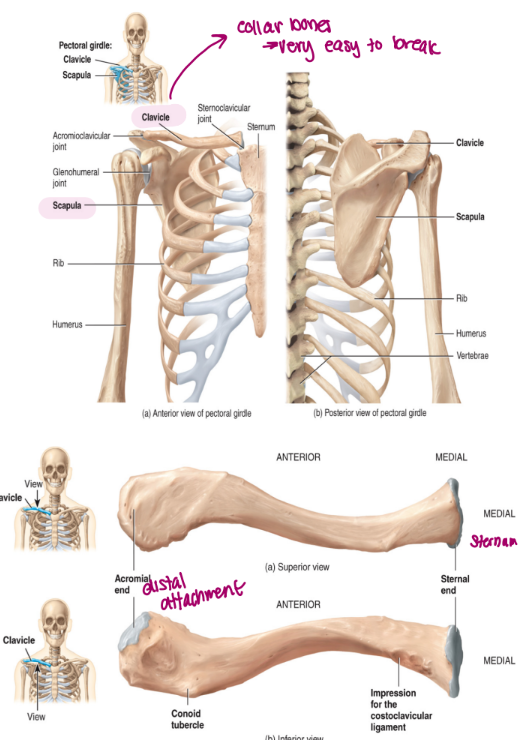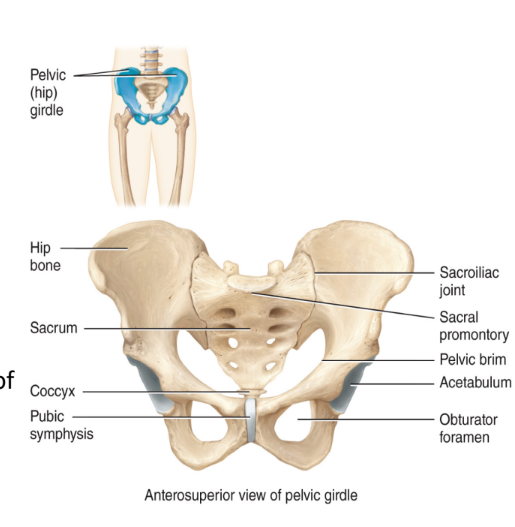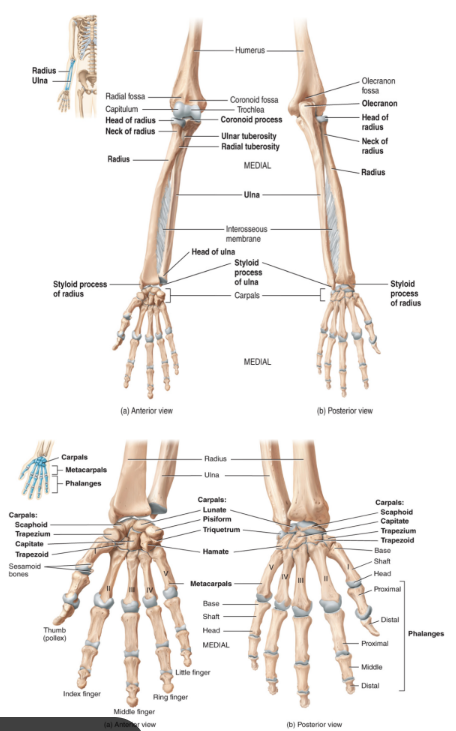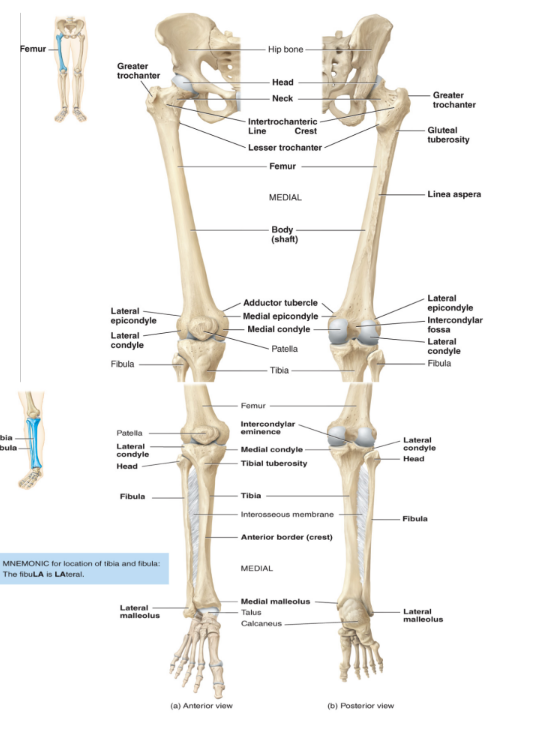lecture 9, the appendicular skeleton
1/6
There's no tags or description
Looks like no tags are added yet.
Name | Mastery | Learn | Test | Matching | Spaced |
|---|
No study sessions yet.
7 Terms
the appendicular skeleton
consists of 126 bones
the pectoral girdle
the pelvic girdle
the upper and the lower limbs
the pectoral girdle
consists of the clavicle and the scapula
a. the clavicle
this is the collarbone
articulates with the manubrium of the sternum and the acromion process of the scapula
forms the connection between the axial and the appendicular skeleton
b. the scapula (long and thin)
acromion process articulates with the clavicle
the cavity referred to as the glenoid fossa or the glenoid cavity articulates with the head of the humerus → upper limb bone
together the glenoid fossa and the humerus from the shoulder
the muscles of the arm and the chest are attached by the coracoid process

the pelvic girdle
composed of two os coxa
each os coxa has
a. an ilium which articulates with the sacrum at the iliac crest (point of connection of the axial and appendicular)
b. an ischium
the inferior surface is called the ischial tuberosity
the part of the pelvis we sit on
bears the weight of the body while sitting
c. a pubic bone
the two pubic bones are joined by a cartilaginous disk called a public symphysis
strip of cartilage
helps with childbirth
gives flex and protect against erosion

joints in the pelvic girdle
the sacroiliac joint
a synovial joint
have fluid and reinforcement
meant for joints with lots movements
the public symphysis
joins the two pubic bones
2 bones when they mate in the middle
formed from cartilage
avascular
the acetabulum
the socket that articulates with the head of the femur (upper leg bone)
the hip bone
a synovial joint
ball and socket
free range of motion
fluid filled

upper and lower limbs: the arms
(numbers are 1 per arm)
ALWAYS SHOWN PALM FACING UPP
humerus
radius/ulna
carpals
2 rows of bones per wrist
5 metacarpals
the palm
14 phalanges

the upper and lower limbs: the leg
(numbers are 1 per leg)
femur
harder to break because bigger
tibia/fibula/patella
7 tarsals (ankle)
calcaneus is the largest tarsal
forms the heel
5 metatarsals
the sole of the feet
14 phalanges

anatomical position of upper and lower limbs
medial bones
ulna
tibia
bones of the big toe
bones of the little finger → PALMS FACING UP
lateral bones
radius (in line with the thumb)
fibula (in line with the bones of the little toe)